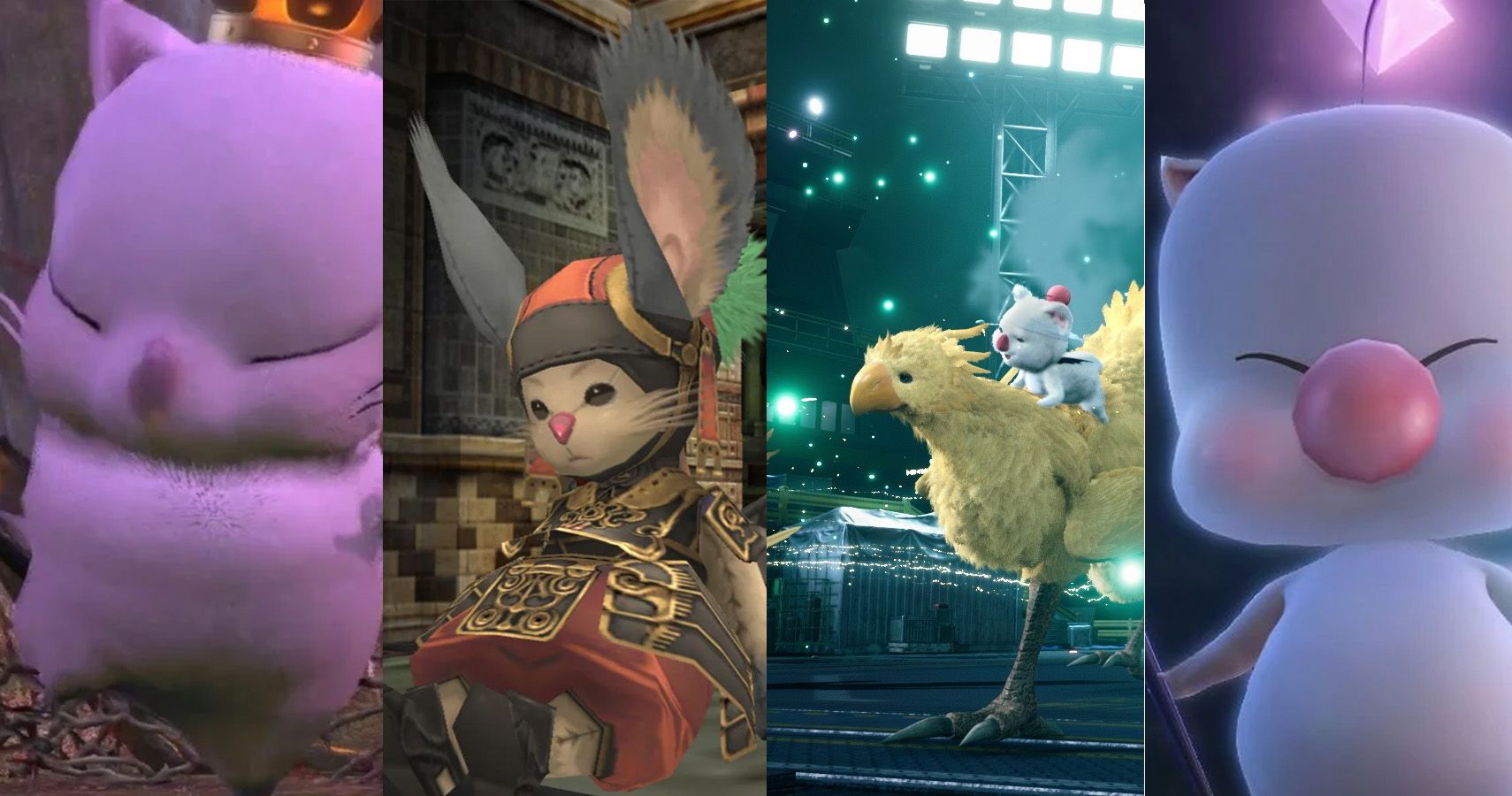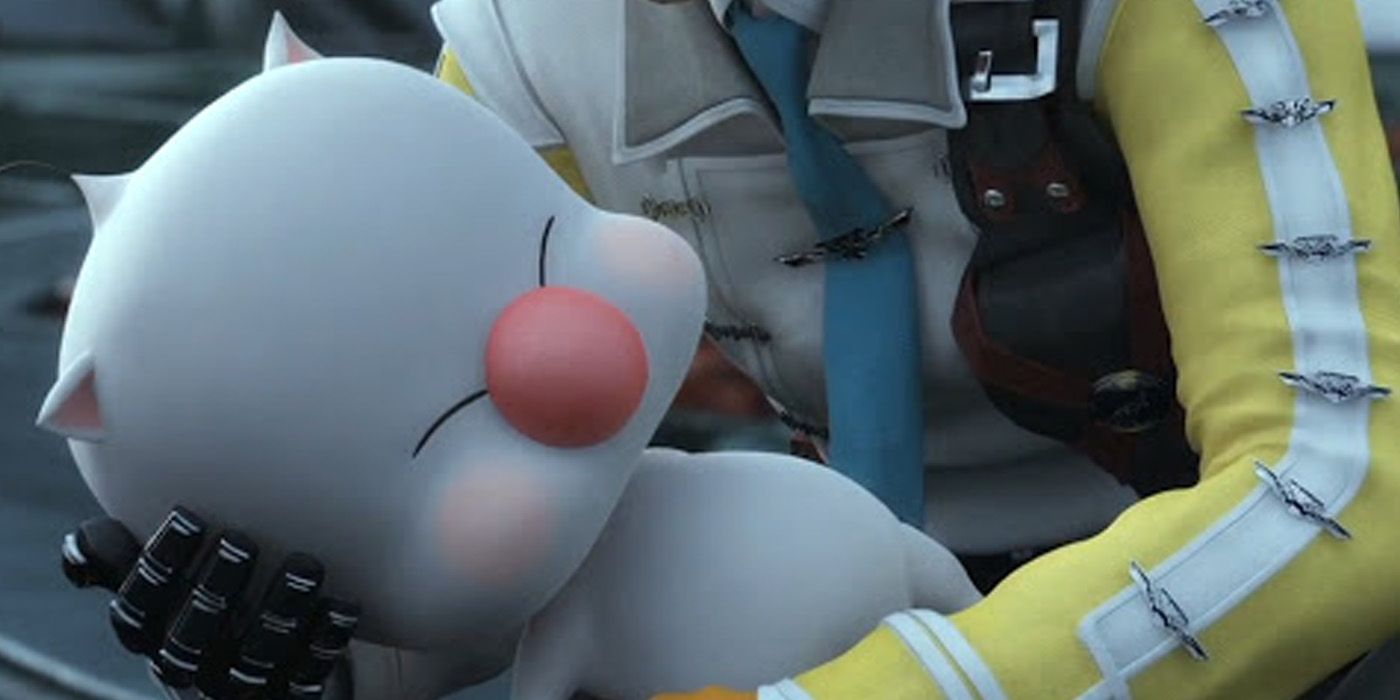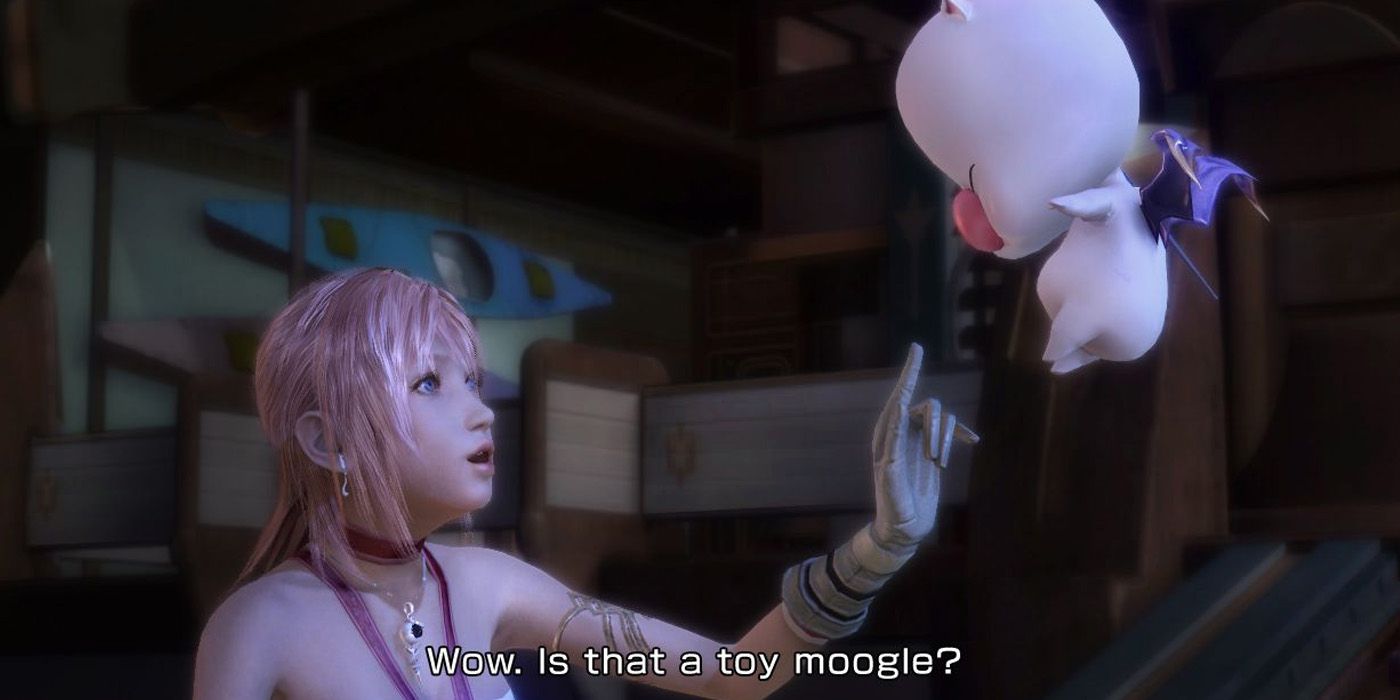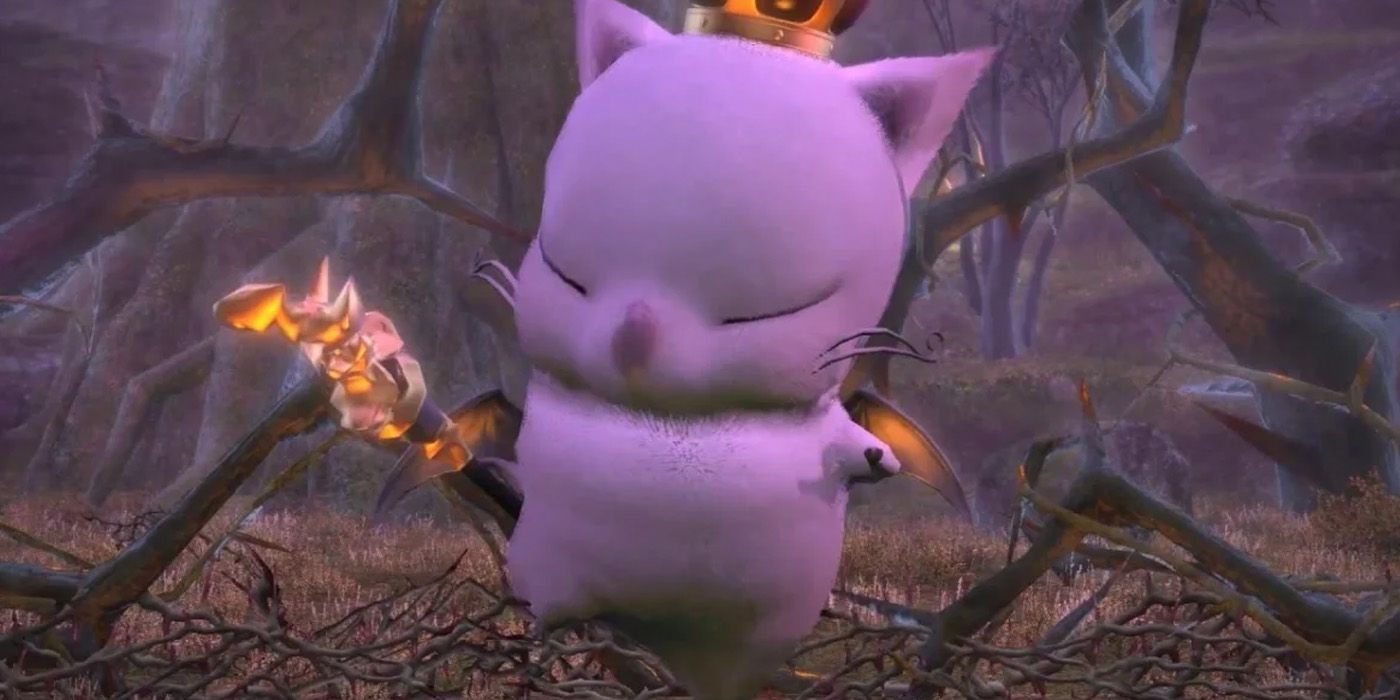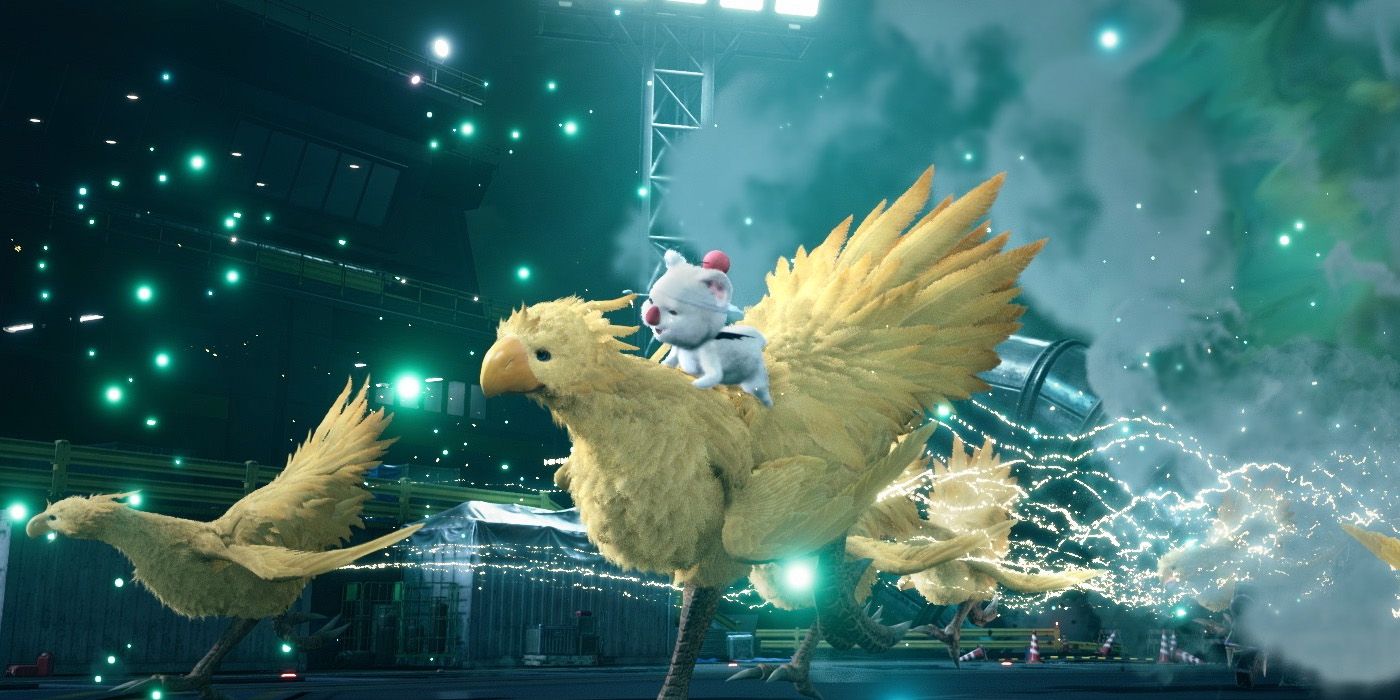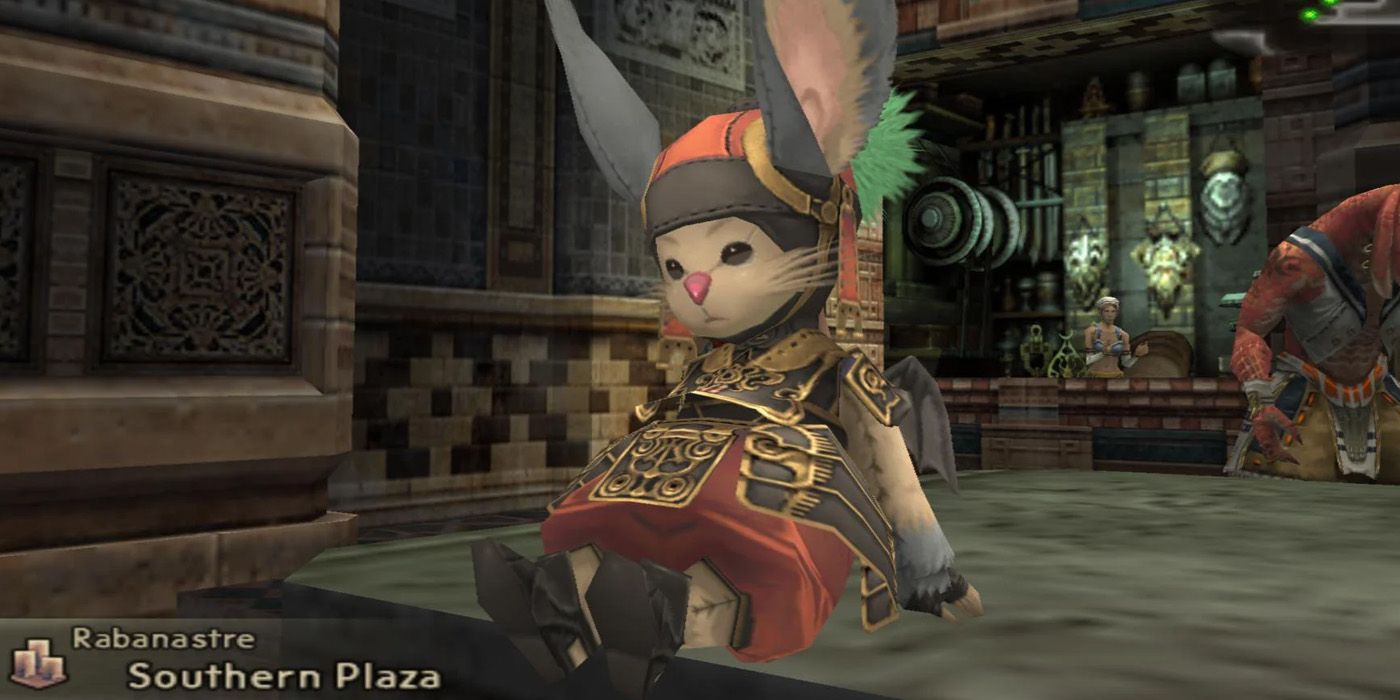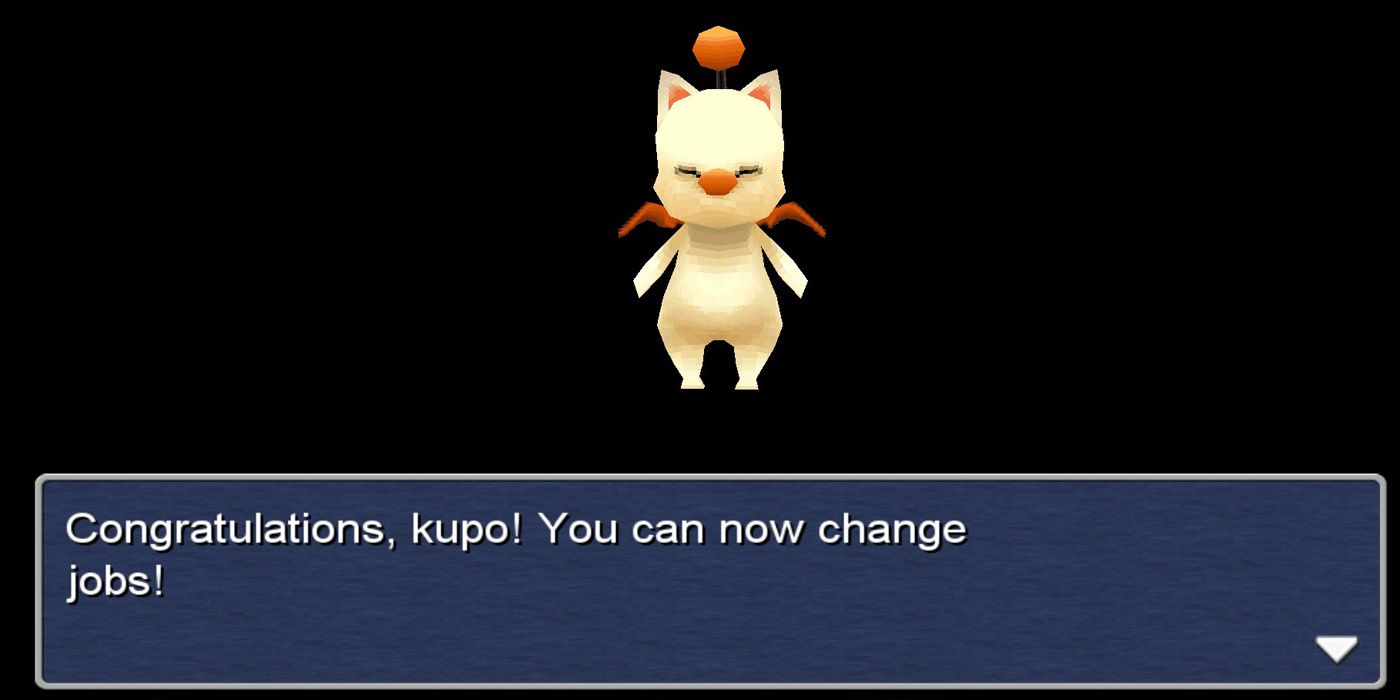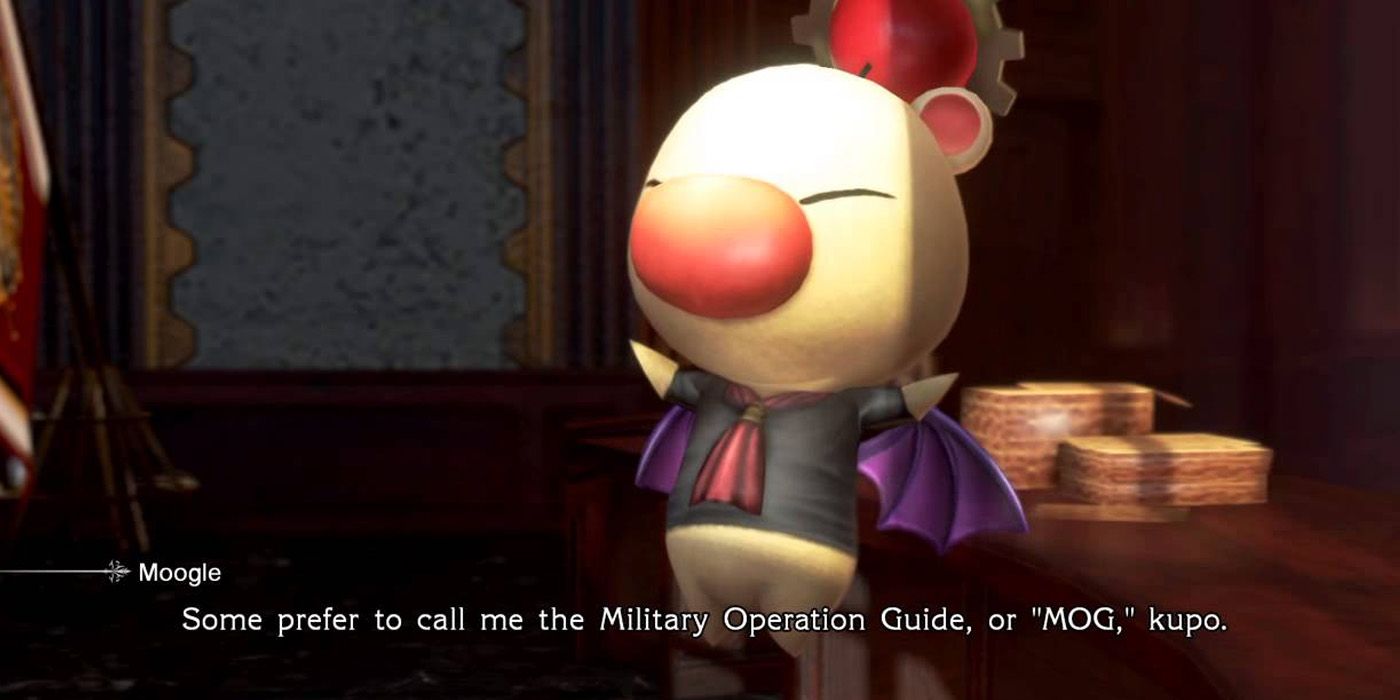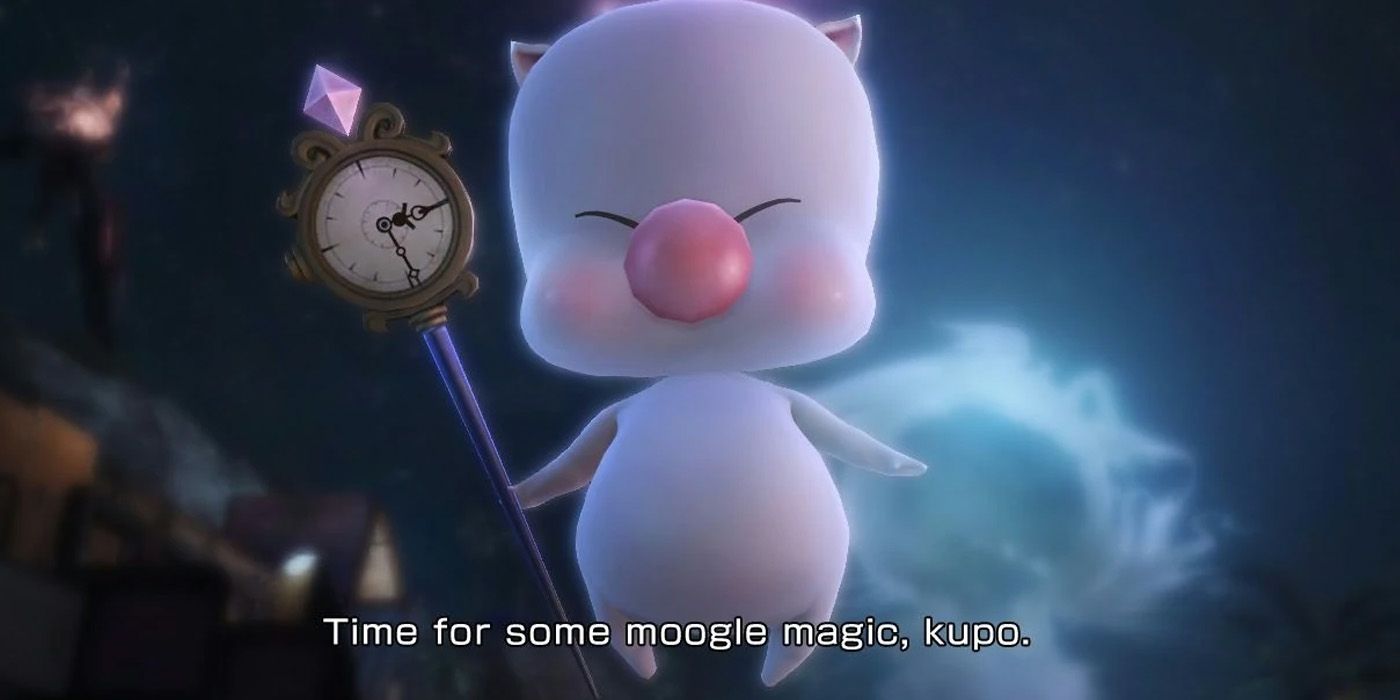Gamers who love the Final Fantasy series have probably loved Final Fantasy 7 Remake. After all, it's about time Square Enix reimagined its turn-based hit game for the PlayStation 2. As a result, the PlayStation 4 remake brought fan-favorite characters Cloud Strike and his pals to realistic proportions, letting go of their polygonal forms and springing into life in real-time glory. Alongside Cloud came famous monsters and summons, including Bahamut, Cactuar, the Chocobo, and even Moogles.
New fans might find Moogles in Final Fantasy games as some of the cutest mascots to ever grace gaming. However, there's more to Moogles than meets the eye. Here are some things players need to know about these cutesy furry creatures.
10 Where Did "Moogle" Come From?
Fans might wonder the origin for the Moogle's name as a species. However, fans won't find it within "Moogle," as this serves as the localized or English name of these adorable creatures. Instead, fans can figure out the etymology of the species with its original Japanese name.
The term "Moogle" comes from "Moguri," which in itself is a portmanteau or a combined version of two words. The first word is "土竜" or "Mogura," which is Japanese for "mole." Its second word is "蝙蝠" or "Komori," which is Japanese for bat. When combined, the two words form "Mo-guri," which, when translated literally, means "mole bat."
9 Moogles Didn't Appear In All Final Fantasy Games
Moogles didn't appear in all Final Fantasy titles. Moreover, the first official appearance of these cute creatures in a major title is Final Fantasy 3. After that, their second appearance in a major title is Final Fantasy 5. This little tidbit means there aren't any Moogles back in Final Fantasy 1, Final Fantasy 2, and Final Fantasy 4.
Moreover, despite their absence in FF4, the Hummingways may have been their equivalent in the title. These cute creatures look like anthropomorphic rabbits that resemble Moogles from Ivalice. They're isolated from humans, as they live in the Red Moon.
8 Moogles Have Unique Blood Types
Moogles turn out to have unique blood types. In the original Japanese version of Final Fantasy 6, the in-game Moogle Mog declares to have the "黒足アヒル型" blood type. When translated, this term means "Black-footed duck type." This tidbit suggests there exist different blood types per Moogle in the Final Fantasy series. Since there's not much information available about this, it's unknown whether Moogle blood types exist only in FF 6 or in other titles.
However, the existence of Moogle blood types shouldn't come out as a surprise, considering Japanese culture also places vast importance on blood types. In Japanese culture, different blood types have "certain characteristics" that they share. They're similar to Western astrology that relies on astrological signs.
7 The Series Has A Dedicated Moogle Theme Music
Alongside their appearances, Moogles have their theme music to accompany their presence in various Final Fantasy titles. Nobuo Uematsu composed the Moogle theme back in 1992 to join the Moogles' first appearance in Final Fantasy 5. Uematsu is a renowned video game composer and has created some of the most iconic tracks in the series. Since then, most subsequent games in the series have some form of musical accompaniment whenever Moogles appear in the game.
Interestingly, variations of this theme appear throughout the franchise. This theme has been included as arrangements in various Final Fantasy albums and even had its share for live performances. In FF14, a song named "Good King Moogle Mog XII" has lyrical accompaniment.
6 The Choco/Mog Summon Has A Secret
Players who loved FF7 likely remember the Choco/Mog from the game. This combination comes in the form of a Summon along with the likes of Bahamut and Ifrit. When players get this Materia, they summon the iconic Choco/Mog pair, which consists of a Moogle riding a Chocobo, another series mascot. Players who used this in the game will likely remember the "DeathBlow!!" attack.
However, this attack happens in 1 of 16 Summons. The Choco/Mog Summon has a rare attack called "Fat-Chocobo," wherein a Fat Chocobo slams the enemy once activated.
5 Moogles Didn't Have A Consistent Design
Moogles frequently changed designs depending on the game they're in. Moreover, Moogles in most Final Fantasy games turn out to be significantly smaller than humans and are furry by nature. This appearance takes a strong departure in Final Fantasy 12, where they've taken appearances similar to rabbits and have clothing. Moogles in this title also have different jobs but retain their rather cute appearance.
Despite the differences in appearance, they do have very common physical traits. First, Moogles possess small wings and a ball of fur called the "pom-pom" attached to their heads through an antenna.
4 The Team Didn't Expect Moogles To Be This Popular
Moogles remain one of the most recognizable characters of the Final Fantasy franchise. However, it's interesting to note that the team didn't actually expect them to be this popular. Hiromichi Tanaka, FF3's designer, noted that the team didn't think of Moogles as memorable or special character additions. They simply wanted to put creatures in the game's caves. Perhaps more surprising is that Tanaka and the team didn't even intend for the Moogles to be mascot characters.
It's a good thing they added in Moogles, though! Aside from Chocobos, Moogles added a lot of creative depth to the Final Fantasy aesthetic.
3 What Does The Term "Kupo" Mean?
Players remember Moogles for two things: their cuteness, and their favorite word, "kupo." In the game, the term "kupo" (クポ in Japanese), comes from the Kupo Nuts, which are their favorite food. While players know "kupo" best as something added at the end of sentences, it appears to have multiple uses. Moogles also use "kupo" at the beginning of a sentence, as adjectives, or even in written text. Sometimes, Moogles use "kupo" whenever they relax, or even as a derogatory term.
Unfortunately, Square Enix has yet to reveal just what exactly "kupo" means. Despite the mystery the term holds, it's still quite a fun addition to the series, kupo!
2 Moogles Didn't Use "Kupo" In Their First Appearance
Building on "kupo" mystery, it turns out Moogles didn't use the term during their first appearance in FF3. Instead, they actually used "nya" in their dialogue. Japanese culture enthusiasts know that "nya" is commonly associated with cats. Whereas cats "meow" in English, they "nya" in Japanese. Moogle dialogue was edited in the FF3 Remake for the Nintendo DS, so Moogles now use "kupo" instead of "nya" in that game.
Interestingly, this detail may imply that "kupo" may simply be a verbal tic. This factoid also explains why sometimes some Moogles speak nothing but "kupo," or simply add "kupo" to their sentences.
1 Moogles Have A Special Delivery Service
Moogles have a reliable mailing service that they use to communicate with each other on a regular basis. This service, called Mognet, initially appeared in Final Fantasy 9 and has since then become a part of other Final Fantasy games.
In its original FF9 appearance, protagonist Zidane and his comrades have the option of helping Moogles deliver mail as Mognet experienced a slowdown on letter delivery. Meanwhile, Final Fantasy 14 introduced the Delivery Moogle system that allowed players to send mail to each other through the Mog Station.

